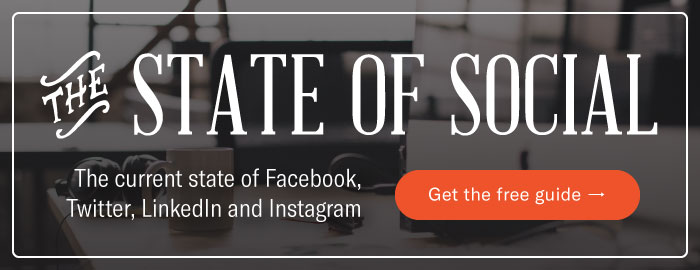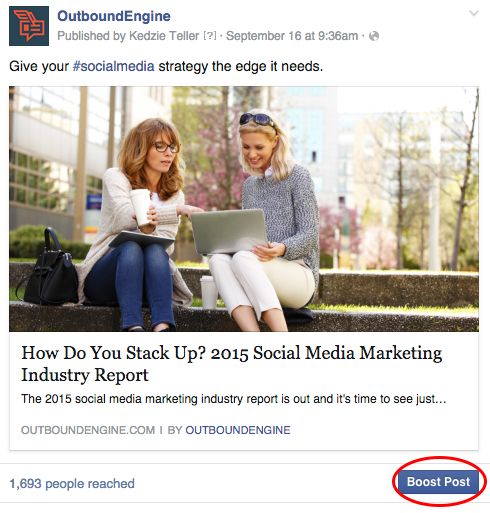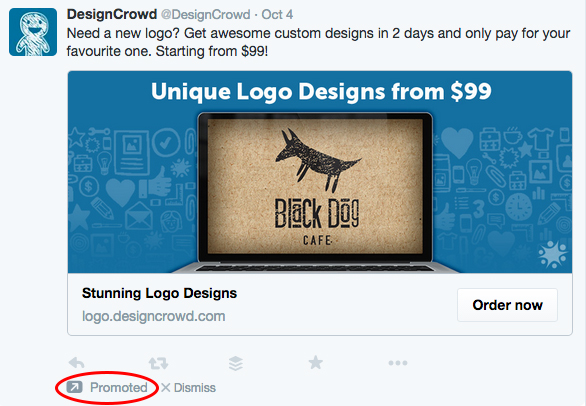See our updated post on Marketing Ideas for Small Businesses in 2017.
With 2016 just around the corner, it’s time for small business owners to be thinking about new marketing strategies. Have you been doing your homework?
We know time is limited, and marketing might not be in your wheelhouse (after all, running your business is your focus), so we’ve taken the time to break down the top 10 strategies you should implement as we enter the new year. Not convinced you have the time to dedicate to these simple tips and tricks? We’re always here to do it for you.
For those of you interested in taking on the challenge, here are eight marketing strategies every small business owner should execute in 2016.
When planning your business’s key messages, you likely spend a good amount of time thinking about how to promote your products, services, and specials. Informing your potential customers about all you offer might sound like a good plan, but it’s self-serving and should only account for a small portion of the information you share.
Enter content marketing.✨
Content marketing is a valuable strategy that keeps your brand top of mind with your customers without overselling your business. Your audience can only handle so many posts, emails and other pieces of content that highlight the work you do. When companies continuously beat their own drum, the messages begin to feel like spam and customers are more likely to tune them out or unfollow the business altogether.
With content marketing, businesses begin to share fun, interesting and industry-adjacent information that they think will keep their audience engaged. A real estate agent might share “10 tips and tricks for streamlining your spring cleaning,” or an auto mechanic might post “5 summer road trips you need to take.” The information might not highlight what your company can do for the customer, but it keeps your brand in front of your audience, making it easier to recall your business at the time of purchase.
Read On: Mastering content marketing takes time and practice. You need to learn what keeps your customers engaged and find a balanced strategy for sharing information about your own services. Get a better understanding of why your company needs content marketing with this great post: Not Using Content Marketing? 5 Stats that Show You’re Becoming Irrelevant.
1. Think Mobile
If you’re not thinking about how customers see you on mobile devices, you need to start now. Don’t believe us? The numbers speak for themselves.
- Internet users spend 51 percent of their time browsing on mobile versus 42 percent on a desktop or laptop.
- Nearly 75 percent of Americans own at least one smartphone, and for many, it’s their main entry point to the Internet.
- Facebook, the world’s most heavily trafficked social media site, reports that a whopping 38 percent of its users are mobile only.
Not long ago, the idea of wearing a watch to communicate with others and stay informed was a concept only seen in TV and movies. Over the last few years, however, mobile usage has skyrocketed, and with the continuous development of mobile tech (we see you reading this, Apple Watch wearer) businesses need to make their mobile strategy a priority.
Some important mobile questions to consider include: How does my website look on a mobile device? Are my emails optimized for reading across multiple devices? How can my business take advantage of other mobile functionalities (push notifications, apps, check-ins, etc.)? We don’t expect you to tackle it all, but if you’re not thinking forward, you’re behind.
2. Get Creative with Email
Don’t let having a routine stop you from getting creative with your marketing strategy. You might send emails to specific customers on specific days using specific language, and that’s all well and good, but why not branch out and try something new?
Testing out unconventional email subject lines is a great strategy to apply in the new year because it’s easy to execute, allows for simple analysis (how was your open rate on this email versus that one?) and costs absolutely nothing.
A few examples of the techniques you might try:
- Single words — The simple, almost mysterious feel of a single-word subject line might induce some curiosity.

- Questions — Raising a question that makes the reader think is another fun way to pique interest.

- Personalization — Finding ways to personalize emails, such as populating subject lines with the recipient’s name, is a great way to encourage opens.

Read On: There are plenty of fun and unique ways to get more clicks on emails. Here we’ve highlighted 7 great subject line techniques that are probably quite different from what you’re doing now.
3. Clean Your Database
Look at all the contacts in your email list. You’ve done such a great job of building your contacts, so your work is done, right? Wrong.
Maintaining your database is one of the simplest and most important things you can do to make sure your email results are accurate. Imagine this: You try a new email campaign design and the results show an extremely low open rate. Clearly, your test shows the campaign didn’t work. But does it really? If a large portion of your contacts is invalid, those results might be completely wrong.
Unsubscribes and address changes are two common occurrences that could be messing with the accuracy of your database, so starting the new year with a clean list is a great goal to set.
4. Be Social
There’s no denying the importance of a strong social presence in today’s marketing world. Your brand absolutely needs to be present on major networking sites like Facebook, Twitter, and LinkedIn. Facebook alone has 1.49 billion monthly active users. That’s right, billion!
B2C interactions have evolved from “you need this” (where the business drives the market) into “but we want this” (where consumers are king). Many purchasing decisions are made before customers ever step foot inside a store. Consumers expect to be heard, to have input and, more recently, to interact with the companies they do business with. Social media provides businesses with the platforms they need to have these interactions and foster more meaningful relationships.
As social sites change, grow and multiply, it’s vital for businesses to try their hand at emerging networks. Did anyone believe that Snapchat would skyrocket to popularity the way it did? Most did not. And now it’s believed to be one of the most important up-and-coming social marketing tools.
What does this mean? The idea of “fringe” sites no longer exists, and instead, businesses need to be willing to try new things and spend time figuring out what new social networks work best for them. A realtor might have a lot of success using Instagram because of the visual elements of his or her job, but that might not hold true for a criminal defense lawyer. Every business matches up differently with various elements of social media, so try things out and find your own recipe for success.
5. Pay to Play
Facebook, Twitter, LinkedIn and a number of other social media sites now offer enhanced advertising options to people who are willing to put their money where their ads are.
It seems simple enough: Pay the social network a few dollars and your company’s page, post, tweet or whatever you want to boost will get an increased reach. But what many business owners don’t realize is that paid ads on social are one of the fastest growing marketing channels available to them, and they ought to jump on board.
On average, social media ads account for 9 percent of a company’s marketing spend, but that number is expected to rise to nearly 25 percent within the next five years. Why? More and more, users spend their time searching for information through their favorite social networks rather than through traditional search engines. Boosting your posts in the noisy social landscape gives you a better chance of being heard and, in the end, can provide a large return.
6. Share More Video
Believe it or not, about 300 hours of video are uploaded to YouTube every minute. That’s 18,000 minutes of video in a single day!
Video content has quickly become one of the most readily consumed forms of media on the Internet, with social networks like Facebook and Twitter both adding native video and autoplay to their platforms. It’s no wonder, then, that advertisers are quickly jumping on board and pushing video as the dominant medium for grabbing consumers’ attention.
What does this mean for you? Get on the video wagon!
Uploading your own content or sharing a third party link are great ways to incorporate video, stay relevant and keep your brand top of mind. You can consider starting a vlog (video blog), sharing tutorials, or even look into video advertisements. Photos will always have their place (and yes, being visual is a key component to a strong social media strategy), but since video is dominating and you’d be remiss to overlook this trend.
7. Monitor Online Reviews
With sites like Yelp, Angie’s List and Google Review, consumers have a lot of power when it comes to making or breaking a company’s reputation. But as scary as that might sound, it’s actually a great opportunity to gain new referral business.
A whopping 90 percent of consumers say their buying decisions are impacted by positive online reviews, so acquiring these reviews needs to be on the top of your small business marketing to-do list. How? The simplest answer is to do good work, but we all know there’s more to it than that. You have to do enough to inspire them to take action and post a good review, whether that is following up with them after purchase or simply asking for a review (We’ve broken down 10 great tips here.)
Managing your reputation online means being proactive and monitoring sites where your business might appear. Find something negative about you? Don’t panic; it’s not make or break. Respond, follow up, and do what you can to provide great customer service, but at the end of the day, you may not be able to please everyone. Focus on building loyalty and getting more positive reviews and soon your referral business will flourish.
Wrap-Up
Feeling ready for the new year? You should be. With these fresh marketing ideas, you’re positioned for a great start to 2016.
We know there’s a lot of different information out there regarding how to best market your company, and frankly, it can be a little overwhelming. But your business is your livelihood and you should feel confident that you’re marketing it to the best of your abilities. Try these marketing ideas for small businesses, monitor your great results, and if you ever need a little help, we’ll always be here to lend a helping hand.
Post Recap:






![Better Email Etiquette Equals Better Marketing Results [16 Rules]](https://www.outboundengine.com/wp-content/uploads/shutterstock_411184843-1-400x250.jpg)

